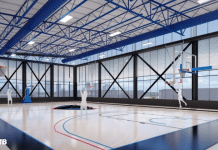Chicago Construction News recently received this as a news release.
With sales of Chicago-area apartments, hotels, retail, office and industrial properties on pace for the best year since the recession, Midwest real estate experts predict another banner year for commercial real estate in 2015 as new projects break ground and existing developments are brought to market. Here are some specific trends they expect to see in the new year:
1. Rentals Continue to Raise the Roof
Perhaps no commercial asset performed better in Chicago this year than the apartment sector, especially new Class A buildings that commanded high occupancies, top rents and few, if any, concessions. Even Chicago’s suburban occupancy rate rose to its highest level in seven years in 2014, with rents predicted to rise 3 to 3.5 percent during 2015.
With developers on track to complete more than 3,100 apartments in downtown Chicago in 2015 and potentially 6,400 in 2016, some wonder if supply will outpace demand. To answer that question, a number of Chicago’s premier multifamily experts share their predictions for Chicago’s rental scene and other top rental markets in 2015:
Waterton Associates – David Schwartz
“The homeownership rate has continued to trend lower as people of all ages have been drawn to the relative affordability and flexibility of the rental lifestyle,” said David Schwartz, co-founder and CEO of Waterton Associates, whose portfolio comprises approximately 20,000 rental units across the U.S. “This is especially noticeable among young adults, many of whom have held off on buying their first home in order to maximize mobility and, in some cases, save up money for a down payment.
“With millennials no longer feeling as much pressure to buy, many are in no rush to leave the amenity-rich rental communities they’ve called home for the past several years, which will continue to drive demand among both renters and investors in 2015,” noted Schwartz. Waterton acquired 10 rental communities in 2014 and plans to announce several new deals in the first quarter of 2015.
M & R Development and RMK Management Corp. – Tony Rossi, Sr.
“Luxury rentals in the city will continue to be in high demand, with strong occupancies driven mostly by Gen Y and millennials,” said Tony Rossi Sr., president of M & R Development and RMK Management. “But well-located, desirable suburban markets will also see an increase in new high-end rentals. These will be especially appealing to young professionals, families seeking the flexibility of renting and access to great schools, and the ever-growing boomer demographic that appreciates the maintenance-free lifestyle of a rental near their friends and family, yet offers walkability and transit access.”
M & R and RMK opened 73 East Lake, a luxury apartment tower in Chicago’s East Loop, in 2014 and plan to break ground on a high-end rental community in the North Shore village of Wilmette, Ill., in 2015.
Prime Property Investors – Barbara Gaffen
According to Barbara Gaffen, co-CEO of Prime Property Investors (PPI), value-add properties are a sweet spot in the multifamily sector due to their strong ROI. “With so many new Class A developments delivering next year, projects that are 10 to 15 years old will be considered bargains, as they can be updated to compete with many of today’s newest buildings at a fraction of the cost of new construction,” said Gaffen.
In 2014, PPI acquired Estates at Fountain Lakes, a Class A garden-style apartment community in suburban Houston – a city Gaffen says will continue to perform well for investors in 2015. “The Houston market is among one of the most vibrant multifamily markets in the country,” she noted. “By enhancing common areas and upgrading kitchens and baths at Estates at Fountain Lake, we’ve been able to increase rents by $150 to $200 per month, showing that pricing improves and risk falls when you add value.”
Kiser Group – Lee Kiser
“As long as financing for home purchasing remains conservative, there will be continued upward pressure on apartment rents in 2015,” said Lee Kiser, principal of Kiser Group, Chicago’s leading mid-market commercial real estate brokerage firm. “With likely no change in interest rates and continued compression on cap rates, apartments should remain a very appealing asset for investors.”
Kiser also notes that as coastal markets reach record low cap rates, national and international buyers will look to other U.S. markets, mainly Texas, Florida, and major Midwest cites such as Chicago, Indianapolis and Columbus, Ohio, where fundamentals are strong.
“However, as developers continue to flood the market with Class A buildings achieving record rents, properties that were delivered in the last few years will have to offer steep discounts or rent concessions just to compete,” said Kiser. “The sustainability of this market is starting to come into question.”
Away from Chicago’s downtown core, neighborhood landlords should anticipate continued rent growth for apartments, especially for units outfitted with premium finishes. “Successful landlords will add amenities and install high-end finishes in both new-construction and vintage renovations,” said Kiser. “Renters want all of the perks and top-quality finishes available, and they are willing to pay for it.”
Kiser predicts the hot Chicago neighborhoods in 2015 will be Humboldt Park, the Broadway corridor from Montrose through Loyola, Margate Park (Uptown), Hyde Park along 51st and 53rd streets, Pilsen, Logan Square, and Avondale.
2. Calling All Condos
With restored confidence in the real estate market driving demand and price appreciation in sought-after neighborhoods, Chicago condo sales have risen steadily over the last half of 2014. But the one thing lacking in Chicago’s condo market in 2014 is poised to make a highly anticipated appearance in 2015: new-construction inventory.
Related Realty – David Wolf:
“New inventory is at historically low levels, which will help to keep demand high as new developments slowly hit the market,” said David Wolf, president of Related Realty, a full-service brokerage firm. “This lack of product has prompted a number of developers to recognize the opportunities available and announce new projects.” However, Wolf notes that while the market is improving, Chicago is still two to three years out from any large-scale new-construction condominium projects delivering.
The current lack of inventory will result in high demand for existing new-construction condos in 2015, like those available at South Loop Luxury by Related, a collection of three condominium buildings totaling 500 units. The development, which was previously stalled and reimagined by Related Midwest in 2013, has fewer than 100 of the 500 units remaining. “We expect rare new-construction opportunities like these to go quickly, particularly in an area like the South Loop, which continues to be a destination for large-scale commercial development like the DePaul arena and McCormick Place hotel, as well as the proposed Lucas Museum.”
Kinzie Real Estate Group – Steve Spinell
“This upcoming year we’re fortunate to have a number of new projects on the boards across all our practice areas,” said Steve Spinell, president of Kinzie Real Estate Group, a full-service real estate firm. “Our brokerage division has grown exponentially over the past year and next year looks just as bright, especially in the upper-bracket market and top-tier locations like Lincoln Park and the North Shore.”
As the for-sale market continues to improve, the firm’s Development Services arm is also gearing up for a strong 2015. The division, which provides asset management planning, strategic disposition advisory services, receivership services, and property management and leasing, will be working on more than a half-dozen projects in these categories next year. “As the overall market continues to strengthen, it will be an opportune time for banks and other investors to sell off any assets they may have been holding on to since the downturn,” he said.
3. The Heat is on for Retail and Restaurant
The National Council of Real Estate Investment Fiduciaries recently reported that, in Chicago, retail properties delivered the highest one-year total returns – 14 percent in the third quarter – beating out all other major property types. But will the retail sector continue to see double-digit returns in 2015?
MACK Commercial – Rob Coco
“We own several retail properties in south suburban Chicago and had strong interest in 2014 from medical providers, including urgent-care facilities, which are moving to strip centers rather than office buildings. It’s easier to see and access these facilities rather than having them tucked away in an office building,” said Rob Coco, director of commercial development at MACK Commercial. “And there aren’t any obstacles to building out strip centers to accommodate medical providers, as the same construction requirements are at play as with an office property.”
Perhaps the main factor driving this demand is the combination of higher inventory and lower prices offered at strip center locations, added Coco. “We expect to see these conditions to continue throughout 2015.”
Englewood Construction – William Di Santo
“We have seen a refreshing number of ground-up commercial construction projects recently,” said William Di Santo, president of national general construction firm Englewood Construction. “While there still is ample space for retrofits in empty storefronts, many retailers and restaurateurs have decided to build ground-up in order to meet brand standards in 2015.”
Englewood recently started three new ground-up projects toward the end of 2014, ranging from a Cooper’s Hawk Winery and Restaurant in the Chicago area to a Seasons 52 restaurant in New Jersey.
He also sees investors breathing new life into malls over the upcoming year, such as the Stratford Square Mall in Bloomingdale, Ill., whose owners recently tapped Englewood to manage the mall’s redesign, construction and tenant coordination. “The traditional mall has faced an uphill battle as competition from lifestyle centers and online shopping has only increased in recent years,” said Di Santo. “Yet many investors plan to revamp malls in 2015 with new concepts and features to appeal to a larger shopping demographic.”
According to Di Santo, one way mall owners are competing in this new retail reality is by introducing entertainment options and experiences to shoppers that cannot be recreated online.
“Fine dining has become a big component of bringing traffic back to the traditional mall,” said Di Santo. “People are willing to go out and spend money on services they cannot get at home. The same goes for entertainment options, such as new theater and bowling concepts, which are both trending for 2015.”
4. Industrial Spec Speeds Up
Building off of an encouraging 2014, more new-construction activity is anticipated for 2015, particularly in the industrial sector. According to NAIOP, national industrial space absorption is expected to reach 211 million square feet by the end of 2014.
HSA Commercial – Bob Smietana
“Targeted speculative developments will continue to be the order of the day in 2015 for well-positioned developers,” said Bob Smietana, vice chairman and CEO of HSA Commercial, which recently completed three industrial spec projects in the Midwest. “As vacancy rates continue to dip and demand for Class A space increases, new development will be viable in select cities, especially in secondary markets like Indianapolis, Milwaukee and Nashville.”
For example, HSA broke ground on a 220,000-square-foot speculative facility in the Indianapolis area in late 2013. As of fourth quarter 2014, the facility is almost completely leased. “In certain markets, some of the strongest demand for new, Class A space is coming from small- to mid-size users,” said Smietana.
MACK Companies – Rob Coco
“Conditions have steadily improved, increasing demand for spec properties,” said Rob Coco of Mack Companies. “In fact, industrial property rental rates have risen to pre-recession levels this year, which is a major indicator of this increased demand. We see this trend continuing through at least the first half of 2015 thanks to easier lending standards and relatively low inventory in the market.”
5. Office Landlords Loom Large
With the downtown office vacancy rate at its lowest level in more than five years, expect 2015 to be the year of the landlord.
Amata Office Solutions – Ron Bockstahler
“The improving economy has boosted confidence among businesses of all sizes, resulting in a much higher volume of deals,” said Ron Bockstahler, CEO of Amata Office Solutions, which specializes in office solutions for companies requiring up to 10,000 square feet of office space. “That, along with a lack of new supply being added to the market, will fuel demand for office space in 2015.”
According to Bockstahler, tenants can expect to see higher rents, fewer concessions and faster-paced deals as spaces fill up before some users are able to finalize leasing decisions. Demand for spaces of 10,000 square feet or less will be especially high as office densification continues. “With many of these smaller spaces already accounted for in Class A buildings, demand will spill over to Class B and C properties in 2015,” said Bockstahler.
Chicago’s burgeoning entrepreneurial community has boosted leasing activity, yet pending legislation that threatens to raise real estate taxes could push startups and other businesses out of the market, according to Bockstahler. “Many are willing to operate their businesses out of their home or relocate to a lower-cost market altogether,” said Bockstahler. “Landlords and legislators need to be cognizant of the many choices available to office tenants who, thanks to technology, can work from virtually anywhere they have an internet connection.”
Cloud-based file storage and more open, collaborative floor plans will continue to reduce the amount of space companies need to lease in 2015, added Bockstahler. “Today, companies are doing more with less space, and the market is starting to reflect that.”
6. Convenience is the Cure-All in Healthcare
The healthcare industry is evolving to take a more consumer-based approach, as healthcare users have access to a sizeable amount of information and have come to expect quickness and convenience. To accommodate these new consumers, healthcare providers in 2015 will be developing new practices and services to best compete in the market, which has implications for healthcare development as well.
HSA PrimeCare – John Wilson
“To allow for the most convenient mix of services, developers are implementing highly efficient floor plans that offer flexible exam rooms and shared waiting areas that free up space for other uses,” said John Wilson, president of HSA PrimeCare.
“The development of buildings that provide a center of excellence in specialties such as orthopedics, oncology, or gastroenterology will be a major focus for healthcare systems in 2015,” continued Wilson. “Establishing the equipment for such practices as cancer treatment in satellite locations is a boon to consumers.”
HSA PrimeCare’s recent development of the University of Chicago Medicine Comprehensive Cancer Center at Silver Cross Hospital in New Lenox, Ill., serves as a good example of how developers are adjusting to this strategy, noted Wilson. “The on-site accessibility of academic specialists and state-of-the-art equipment provides patients with the highest quality care in a community setting,” he said.






